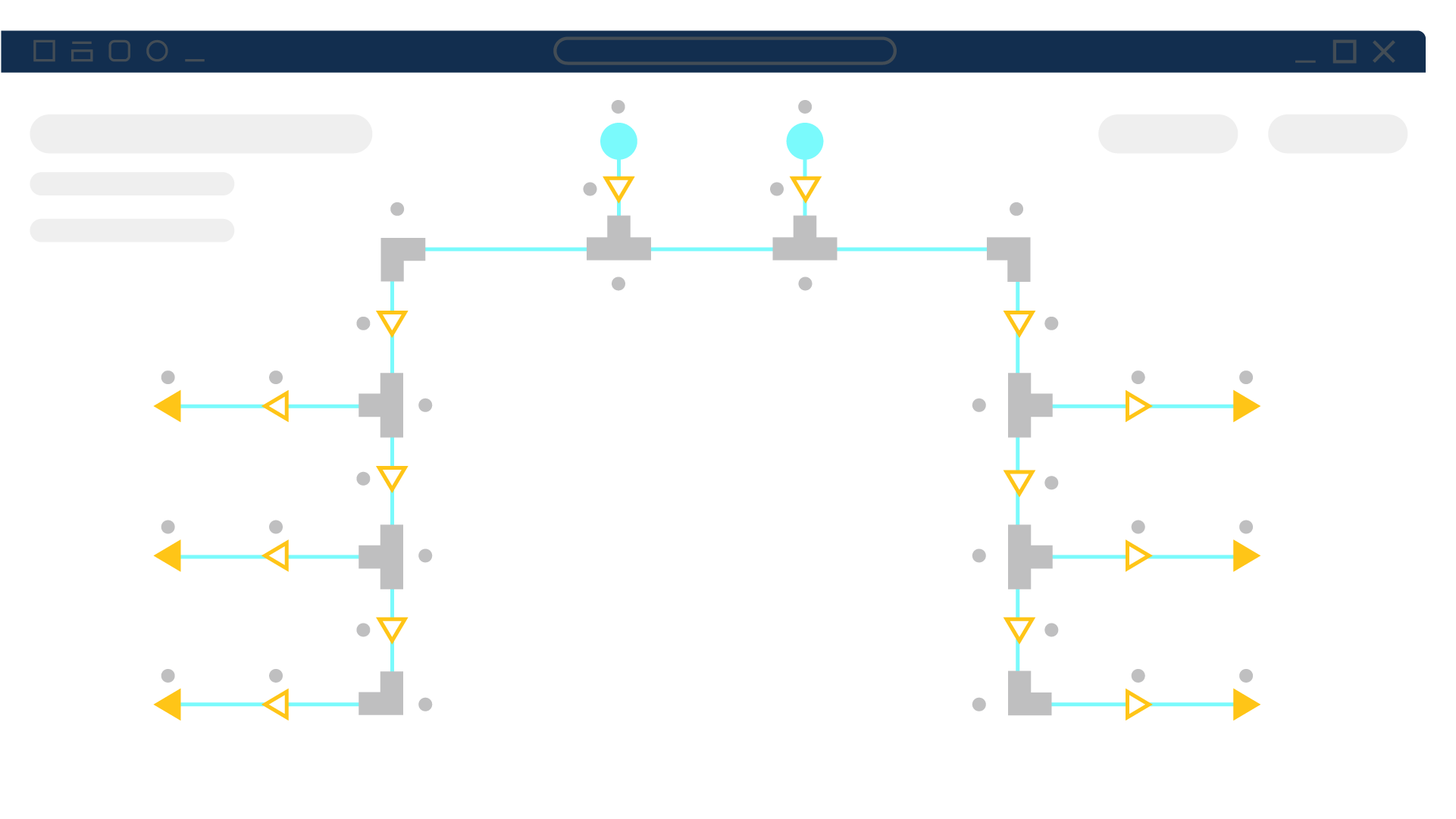Predict pressures, temperatures, velocities, and Mach flows (subsonic through choked) across pipes/ducts, fittings, valves, and heat transfer for designs you can defend.
Evaluate fans/blowers/compressors with curve-based models, compare damper vs. speed control, and quantify power to meet delivery targets at minimum energy.
Diagnose issues with color-mapped results, ΔP/energy breakdowns, and choke flags, then export configurable reports and Excel data for fast, defensible reviews.

Model gas and steam networks with accurate compressible-flow physics.
Evaluate equipment performance and operating strategies across system states.
Size and analyze control and safety components in compressible systems.
Build, compare, and share models efficiently across teams.
Balance flows and pressures across branching gas/steam networks to meet equipment and process setpoints.
Automatically adjust inputs to meet engineering goals and constraints.
Simulate time-dependent behavior in compressible networks.
Optimize pipe/duct sizes and equipment selections to meet constraints at minimum cost or power.

We have answers! Here are some of the most common questions we hear from engineers and companies evaluating Arrow. Topics include sonic choking, liquid vs. gas applications, real-gas effects, model size limits, turbine and relief valve modeling, loss calculations, and gas mixtures.
Yes, Arrow accurately models sonic choking at all three geometric conditions in compressible networks.
No—Arrow is for gas/steam systems; it’s built on a gas equation of state. It can, however, model incompressible gas flow found in vents and many HVAC applications.
Real-gas behavior is handled via a compressibility factor from an equation of state or property database, and heat transfer is modeled along pipes/ducts, across heat exchangers, and in compressors/fans with energy balances at junctions.
Arrow supports up to 10,000 pipes and 10,000 junctions; before that, RAM typically becomes the constraint, roughly 32 × (branches + tees)² bytes are needed (e.g., ~32 MB for 1,000 branches/tees).
Not directly; model it with a Heat Exchanger junction by entering the turbine’s pressure drop vs. flow and specifying a heat rate out to capture both the pressure drop and enthalpy reduction.
It uses Idelchik-based correlations that account for flow split, area changes, and branch angles to compute pressure losses accurately.
Use a Relief Valve junction (normally closed; Arrow opens it when cracking pressure is reached) or a regular Valve if you know it’s open; for choked-flow checks through valves/orifices, enter CdA on the junction’s Optional tab.
Create mixtures using NIST REFPROP or the optional Chempak database (the Standard database doesn’t mix); assign gases/mixtures to sources and Arrow carries composition through the network via species mass conservation.
Calculate steady-state hydraulic pressure drop and pipe flow distribution in liquid and low-velocity gas piping and ducting systems.
Surge analysis software used to calculate high-pressure transients in liquid piping systems caused by water hammer.
dynamic simulation tool for high-speed, acoustic transients that occur in steam and gas piping systems.
Robust chemical process simulation software designed to meet the diverse needs of engineers who design, troubleshoot, and innovate.